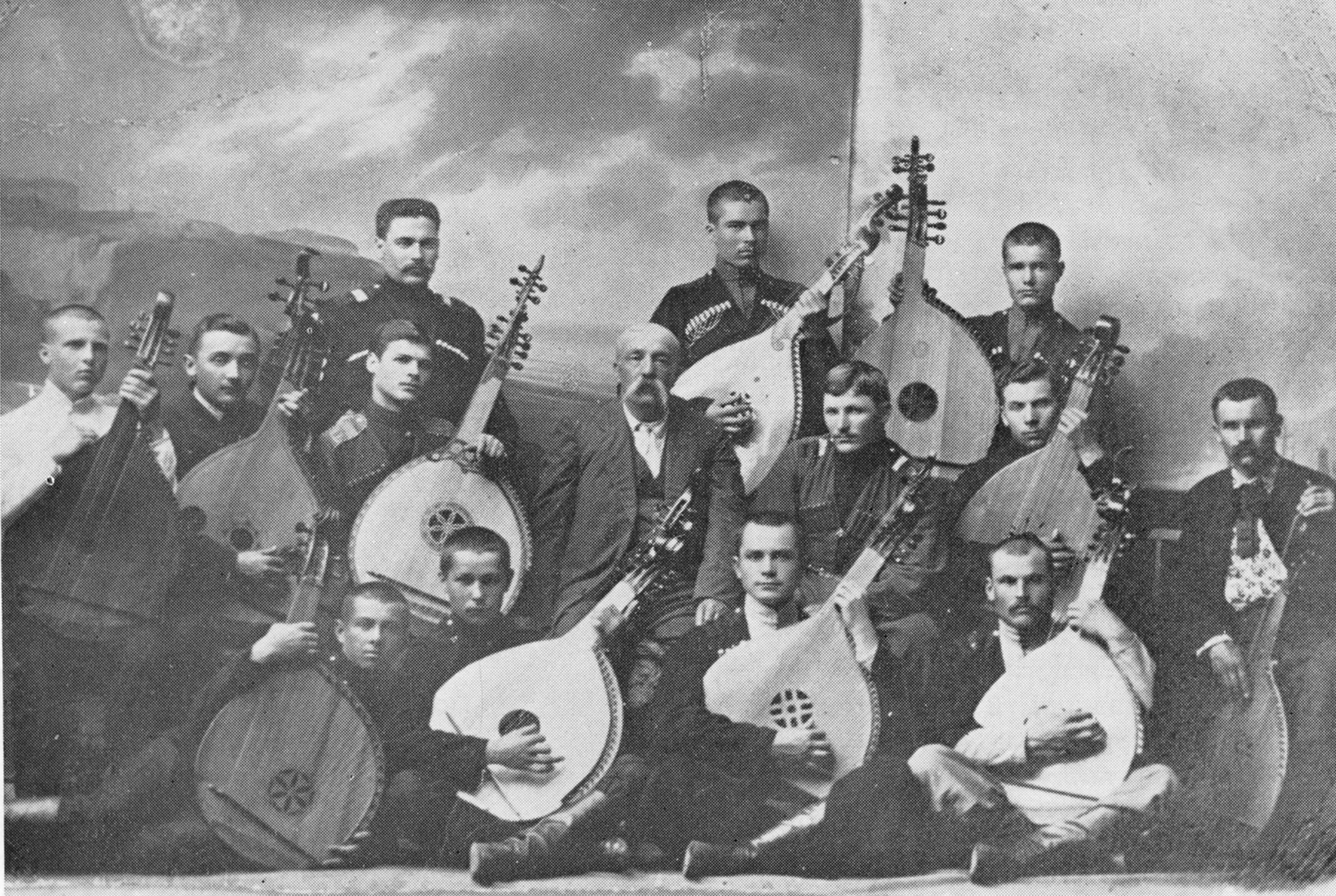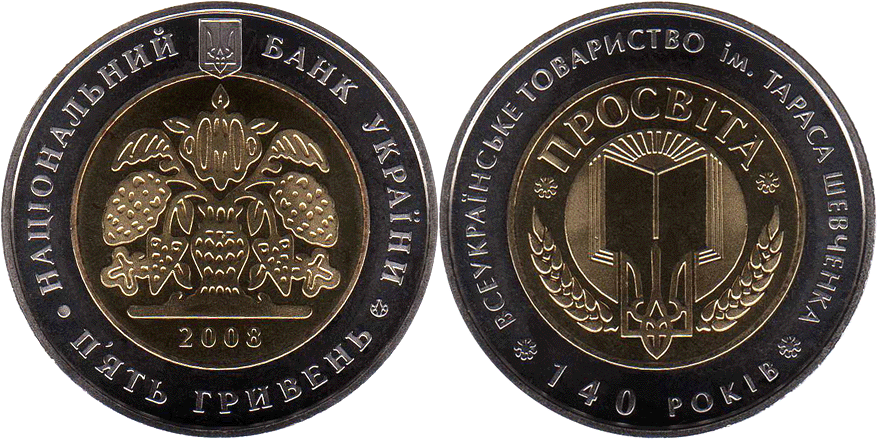|
Mykola Bohuslavsky
Mykola Oleksiiovych Bohuslavsky (18501933) was an organiser and sponsor of the kobzar renaissance in the Kuban, a community leader, publisher. Bohuslavsky organized the first (1913) and second (1916) schools of kobzar art in the Kuban. Under his support bandura playing in the Kuban became a popular movement. He was an active member of the Prosvita organization in Yekaterinodar, and the owner of the Ukrainian-language illustrated weekly "" (1910–14), which was edited by Dmytro Doroshenko. D. Doroshenko regarded Bohuslavsky as "a tireless agitator of the youth who was able to get young people involved in working on community causes." Bohuslavsky worked as an official in the Kuban-Black Sea Railway. The cossacks called him the "bandura father" because of his deep love for the instrument. As a result of his efforts bandura groups were established in most Stanitsas in the Kuban. He was arrested in 1930–33 and died in the Krasnodar Krasnodar, formerly Yekaterinodar (until ... [...More Info...] [...Related Items...] OR: [Wikipedia] [Google] [Baidu] |
Kuban 1g
Kuban (Russian and Ukrainian: Кубань; ) is a historical and geographical region in the North Caucasus region of southern Russia surrounding the Kuban River, on the Black Sea between the Don Steppe, the Volga Delta and separated from the Crimean Peninsula to the west by the Kerch Strait. Krasnodar Krai is often referred to as ''Kuban'', both officially and unofficially, although the term is not exclusive to the krai and also accommodates the republics of Adygea, Karachay-Cherkessia, and parts of Stavropol Krai. Cossack settlement The Cossack settlement of Kuban and of the adjacent Black Sea region occurred gradually for over a century, and was heavily influenced by the outcomes of the conflicts between Russia and Ottoman Empire.Azarenkova et al., pp. 8ff. In the mid-18th century, the area was predominantly inhabited by the Adyghe tribes. After the Russo-Turkish War of 1768–1774, the population of the area started to show more pro-Russian tendencies. In ord ... [...More Info...] [...Related Items...] OR: [Wikipedia] [Google] [Baidu] |
Dmytro Doroshenko
Dmytro Ivanovych Doroshenko (; 8 April 1882 – 19 March 1951) was a prominent Ukrainian political figure during the revolution of 1917–1918 and a leading Ukrainian emigre historian during the inter-war period. Doroshenko was a supporter of federal ties with the Russian Republic and a member of the Ukrainian Party of Socialist Federalists. Political career Doroshenko was born into an old Ukrainian Cossack noble family, which had given Ukraine two prominent Hetmans during the seventeenth century. He studied history at the universities of Warsaw, Saint Petersburg, and Kyiv and was active in the Ukrainian national movement during the early years of the twentieth century; he contributed articles on history and literature to Ukrainian periodicals and edited the political journal ''Ukrainskii vestnik'' (The Ukrainian Herald) which reflected the views of the Ukrainian Club in the Russian State Duma (1906). Thereafter, he became active in the Ukrainian Scientific Society in Kiev and t ... [...More Info...] [...Related Items...] OR: [Wikipedia] [Google] [Baidu] |
Kobzars
A ''kobzar'' ( ; ) was an itinerant Ukrainian bard who sang to his own accompaniment, played on a multistringed kobza or bandura. Tradition The professional kobzar tradition was established during the Hetmanate Era around the sixteenth century in Ukraine. Kobzari were often blind and became predominantly so by the 1800s. ''Kobzar'' literally means ' kobza player', a Ukrainian stringed instrument of the lute family, and more broadly — a performer of the musical material associated with the kobzar tradition. Kobzari also played the bandura, an instrument which was likely developed from the kobza. Kozak Mamai and early origins Kozak Mamai ( Ukrainian: Козак Мамай) is a popular and iconic image that has many variants, but usually features a man sitting cross-legged and playing a kobza. The hairstyle is often a ''chupryna'' of Kozak style. Various items often surround Kozak Mamai including a horse, a tree, a rifle, a sword, and a gunpowder horn, and sometim ... [...More Info...] [...Related Items...] OR: [Wikipedia] [Google] [Baidu] |
Bandurists
A bandurist () is a person who plays the Ruthenians, Ruthenian plucked string instrument known as the bandura. Types of performers There are a number of different types of bandurist who differ in their particular choice of instrument, the specific repertoire they play and manner in which they approach their vocation. *Kobzari, who play authentic ethnographic instruments or copies. This group can also be further categorized into ''authentic'', ''reproduction'', and ''stage'' performers. *Academic players, playing more sophisticated contemporary concert banduras. These performers have a tertiary education majoring in bandura performance and typically perform works by Western classical composers in addition to, or instead of, Ukrainian folk music. This category can be further divided into instrumentalists (who only perform instrumental works) and vocalists (who primarily use the bandura to accompany their voice). The most common academic bandurists play in the Kyiv academic style. ... [...More Info...] [...Related Items...] OR: [Wikipedia] [Google] [Baidu] |
1933 Deaths
Events January * January 11 – Australian aviator Sir Charles Kingsford Smith makes the first commercial flight between Australia and New Zealand. * January 17 – The United States Congress votes in favour of Philippines independence, against the wishes of U.S. President Herbert Hoover. * January 28 – "Pakistan Declaration": Choudhry Rahmat Ali publishes (in Cambridge, UK) a pamphlet entitled ''Now or Never; Are We to Live or Perish Forever?'', in which he calls for the creation of a Muslim state in northwest India that he calls "Pakistan, Pakstan"; this influences the Pakistan Movement. * January 30 ** Nazi Party leader Adolf Hitler is appointed Chancellor of Germany (German Reich), Chancellor of Germany by President of Germany Paul von Hindenburg. ** Édouard Daladier forms a government in France in succession to Joseph Paul-Boncour. He is succeeded on October 26 by Albert Sarraut and on November 26 by Camille Chautemps. February * February 1 – Adolf Hitle ... [...More Info...] [...Related Items...] OR: [Wikipedia] [Google] [Baidu] |
1850 Births
Events January–March * January 29 – Henry Clay introduces the Compromise of 1850 to the United States Congress. * January 31 – The University of Rochester is founded in Rochester, New York. * January – Sacramento floods. * February 28 – The University of Utah opens in Salt Lake City. * March 5 – The Britannia Bridge opens over the Menai Strait in Wales. * March 7 – United States Senator Daniel Webster gives his "Seventh of March" speech, in which he endorses the Compromise of 1850, in order to prevent a possible civil war. * March 16 – Nathaniel Hawthorne's historical novel '' The Scarlet Letter'' is published in Boston, Massachusetts. * March 19 – American Express is founded by Henry Wells and William Fargo. * March 31 – The paddle steamer , bound from Cork to London, is wrecked in the English Channel with the loss of all 250 on board. April–June * April 4 – Los Angeles is incorp ... [...More Info...] [...Related Items...] OR: [Wikipedia] [Google] [Baidu] |
Stanitsa
A stanitsa or stanitza ( ; ), also spelled stanycia ( ) or stanica ( ), was a historical administrative unit of a Cossack host, a type of Cossack polity that existed in the Russian Empire. Etymology The Russian word is the diminutive of the word (), which means "station" or "police district". It is distantly related to the Sanskrit word (), which means "station", "locality", or "district". Structure The stanitsa was a unit of economic and political organisation of the Cossack peoples who lived in the Russian Empire. Each stanitsa contained several villages and khutirs. An assembly of landowners governed each stanitsa community. This assembly distributed land, oversaw institutions like schools, and elected a stanitsa administration and court. The stanitsa administration consisted of an Ataman, a collection of legislators, and a treasurer. The stanitsa court made judgements regarding "petty criminal and civil suits". All inhabitants, except for non-Cossacks, were considered me ... [...More Info...] [...Related Items...] OR: [Wikipedia] [Google] [Baidu] |
Bandura
A bandura ( ) is a Ukrainians, Ukrainian plucked string instrument, plucked-string folk-instrument. It combines elements of the zither and lute and, up until the 1940s, was also often called a kobza. Early instruments () had 5 to 12 strings and resembled lutes. In the 20th century, the number of strings increased initially to 31 strings (1926), then to 56 strings – 68 strings on modern "concert" instruments (1954).Mizynec, V. ''Folk Instruments of Ukraine''. Bayda Books, Melbourne, Australia, 1987, 48с. Musicians who play the bandura are referred to as bandurists. In the 19th and early 20th centuries traditional bandura players, often blind, were called kobzars. It is suggested that the instrument developed as a hybrid of gusli (Eastern-European psaltery) and kobza (Eastern-European lute). Some also consider the ''kobza'' as a type or an instrument resembling the ''bandura''. The term ''bandura'' occurs in Polish chronicles from 1441. The hybridization, however, occurred in t ... [...More Info...] [...Related Items...] OR: [Wikipedia] [Google] [Baidu] |
Prosvita
Prosvita (), since 1991 officially known as All-Ukrainian Prosvita Society named after Taras Shevchenko () is an enlightenment society aimed to preserve and develop Ukrainian culture, education and science, that was created in the nineteenth century in Austria-Hungary's Kingdom of Galicia and Lodomeria. According to the declaration of its founders, the movement was created as a counterbalance to anti-Ukrainian colonial and Ukrainian Russophiles, Russophile trends in the Ukrainian society of the period. History Prosvita was founded in 1868 in Lviv by 65 delegates from different regions and groups of intellectuals, mostly from the same city. Anatole Vakhnianyn was elected the first head of the Prosvita Society. By the end of 1913, Prosvita had 77 affiliate societies and 2,648 reading rooms. After the Russian Revolution of 1905, First Russian Revolution, local branches of the society were also opened in the Russian Empire, Russian-ruled areas populated by Ukrainians: in Kater ... [...More Info...] [...Related Items...] OR: [Wikipedia] [Google] [Baidu] |
Yekaterinodar
Krasnodar, formerly Yekaterinodar (until 1920), is the largest city and the administrative centre of Krasnodar Krai, Russia. The city stands on the Kuban River in southern Russia, with a population of 1,154,885 residents, and up to 1.263 million residents in the Urban Okrug. In the past decade Krasnodar has experienced rapid population growth, rising to become the tenth-largest city in Russia, and the largest city in southern Russia, as well as the Southern Federal District. The city originated in 1793 as a fortress built by the Cossacks, and became a trading center for southern Russia. The city sustained heavy damage in World War II but was rebuilt and renovated after the war. Krasnodar is a major economic hub in southern Russia; In 2012, ''Forbes'' named Krasnodar the best city for business in Russia. Krasnodar is home to numerous sights, including the Krasnodar Stadium. Its main airport is Krasnodar International Airport. Name Krasnodar was founded on January 12, 1793 ... [...More Info...] [...Related Items...] OR: [Wikipedia] [Google] [Baidu] |







